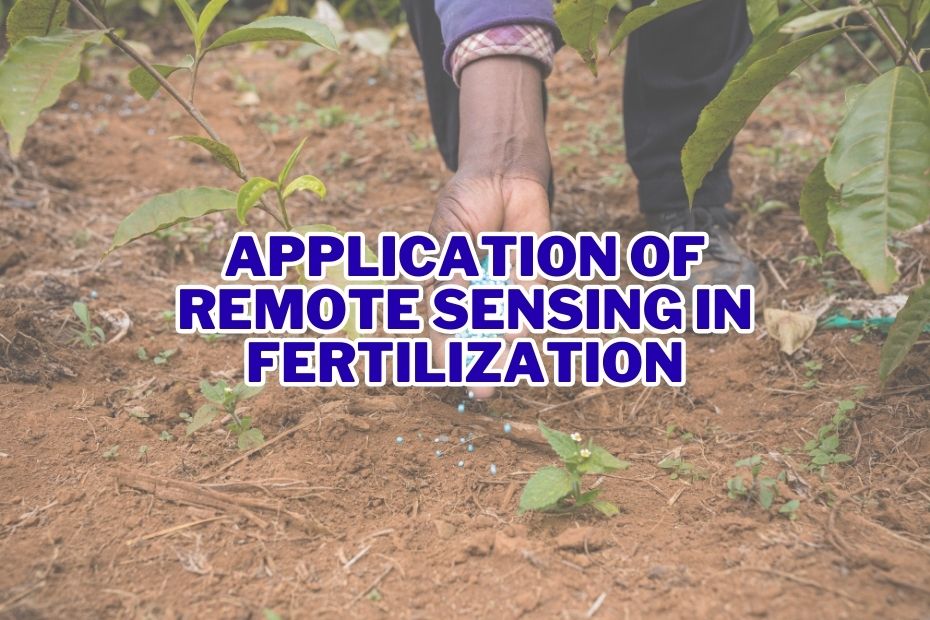In recent years, remote sensing has emerged as a valuable tool in various fields, including agriculture. The application of remote sensing in fertilization practices has revolutionized the way farmers manage their crops. This article explores the application of remote sensing in fertilization, highlighting its benefits, challenges, and future prospects.
Remote sensing technology revolutionizes fertilization practices by enabling precise application, optimizing resource usage and enhancing crop yields. It provides real-time data on crop health and soil conditions, informing decisions on the type and quantity of fertilizers to apply.
Importance of Fertilization in Agriculture
Fertilization plays a crucial role in modern agriculture by providing essential nutrients to crops, promoting growth, and maximizing yields. However, excessive or inadequate fertilization can lead to nutrient imbalances, environmental pollution, and economic losses. To ensure optimal fertilization, farmers need accurate information on the nutrient requirements of their crops. This is where remote sensing technology comes into play.
Application of Remote Sensing In Fertilization
Understanding the application of remote sensing in fertilization is integral to modern agriculture and environmental sustainability. Remote sensing technology provides in-depth data on factors such as soil conditions, plant health, moisture content, and pest infestation, which are pivotal in improving crop yield and nutrient management.
1. Nutrient Management
Successful nutrient management is a delicate balance that requires accurate knowledge of soil composition and crop nutrient requirements. Remote sensing identifies nutrient-rich zones and monitors nutrient absorption by crops. This technology aids in customizing fertilization strategies, ensuring efficient utilization and reducing wastage.
2. Variable Rate Fertilization
Variable Rate Fertilization (VRF) optimizes nutrient application based on the unique requirements of different soil zones. Remote sensing supports VRF by mapping soil variability and plant health, guiding the precise application of nutrients, and thereby reducing wastage and improving yields.
3. Disease and Pest Detection
Early detection of pests and diseases can save crops from significant damage. Remote sensing devices can detect anomalies in plant behavior or appearance, signalling potential threats. This enables farmers to apply remedial measures promptly, reducing crop losses.
4. Soil Health Monitoring
Remote sensing enables comprehensive soil health monitoring by providing data on soil texture, structure, and organic matter content. This information guides the application of appropriate fertilizers to enhance soil fertility, ensuring sustainable farming practices.
5. Moisture Content Assessment
Adequate water availability is crucial for crop health and productivity. Remote sensing assesses soil moisture levels, helping to manage irrigation practices and prevent water wastage. It also identifies drought-prone areas requiring special attention.
6. Crop Yield Estimation
Remote sensing aids in predicting crop yields by monitoring crop growth and health. Using multispectral imagery, this technology provides insights into crop conditions and anomalies, enabling farmers to adjust their strategies accordingly for maximum yield.
7. Monitoring Environmental Impact
Fertilizers, if misused, can harm the environment. Remote sensing monitors the impact of fertilization on local ecosystems, assessing factors like water quality and biodiversity. This helps mitigate negative environmental impacts and promotes biodiversity conservation.
8. Precision Agriculture
Precision agriculture, enabled by remote sensing, provides real-time information about soil and crop conditions. This facilitates optimal nutrient application and irrigation management, promoting resource efficiency and crop productivity.
9. Growth Stage Monitoring
Different growth stages of crops have different nutrient and water requirements. Remote sensing helps monitor these stages, allowing for stage-specific fertilization, which enhances crop development and productivity.
10. Detection of Fertilizer Deficiencies
Early detection of fertilizer deficiencies can prevent significant crop losses. Remote sensing identifies nutrient deficiencies in crops by analyzing plant colors and their anomalies. This facilitates the timely application of required fertilizers, ensuring healthy crop growth.
11. Climate Change and Fertilization
Climate change significantly affects fertilization strategies. Remote sensing helps understand climate change impacts on soil and crops, aiding in the development of effective and resilient fertilization strategies.
Conclusion
Remote sensing has emerged as a valuable tool for improving fertilization practices in agriculture. By providing crucial information on crop health, nutrient deficiencies, and fertilizer efficiency, remote sensing enables farmers to make informed decisions and optimize their fertilization strategies. Harnessing the power of remote sensing can lead to increased crop productivity, reduced environmental impact, and improved economic outcomes for farmers.
FAQs: Application of Remote Sensing In Fertilization
Can remote sensing detect specific nutrient deficiencies in crops?
Yes, remote sensing can identify nutrient deficiencies in crops by analyzing their spectral signatures and changes in reflectance properties.
What are the benefits of precision fertilization using remote sensing?
Precision fertilization based on remote sensing data helps optimize fertilizer application, minimize waste, and promote healthy crop growth.
What challenges are associated with remote sensing in fertilization?
Challenges include weather variations, cloud cover, atmospheric disturbances, and the cost of acquiring and processing remote sensing data.
What is the future potential of remote sensing in fertilization?
Advancements in technology and integration with other agricultural techniques hold promise for expanding the application of remote sensing in fertilization.
